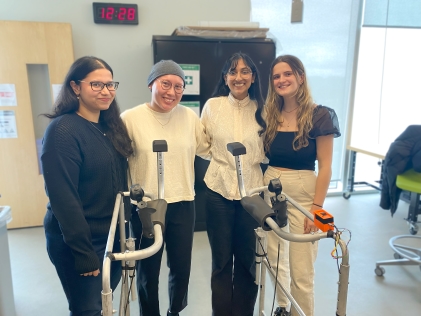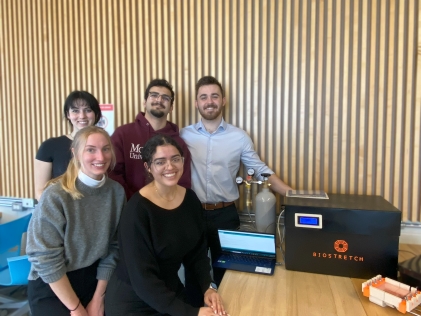
SureStride
An assistive mobility device with increased user support, smart sensors to detect unusual movements and fall-preventative braking. Braking can be activated by sensors that measure acceleration, distance from objects or side-by-side wobble, along with manual braking.

